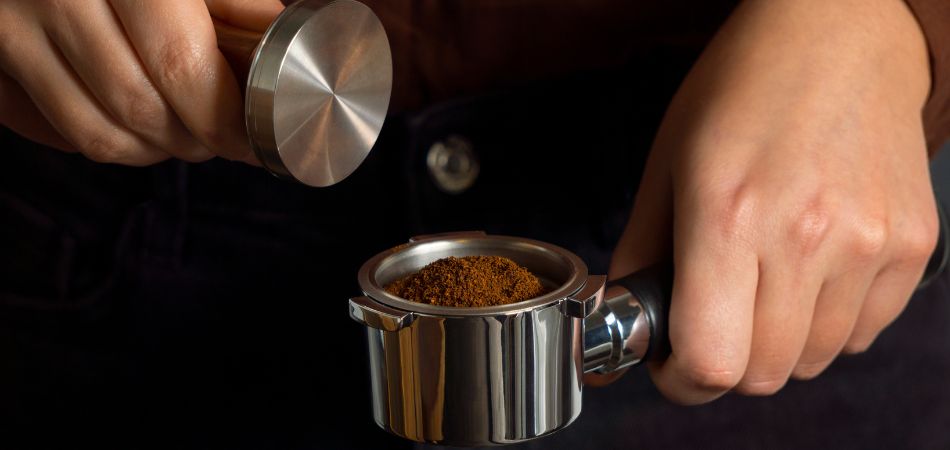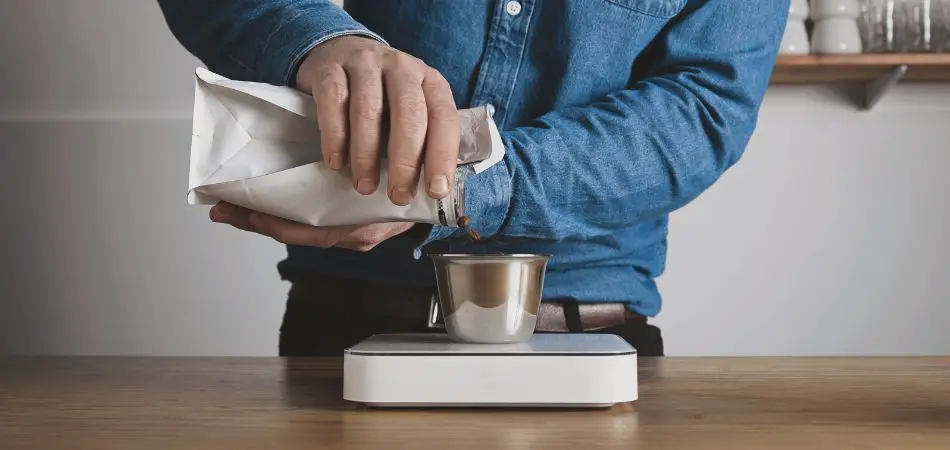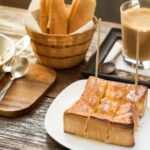Craving Espresso? Learn How to Make Espresso Without Machine
Do you love espresso but don’t want to spend hundreds on a fancy machine? Good news—you don’t need one! With a few simple tools and the right techniques, you can make rich, bold espresso-like coffee at home.
In this guide, we’ll walk you through four foolproof methods to brew espresso without a machine, using equipment you might already own. Whether you prefer the AeroPress, Moka pot, French press, or even a DIY stovetop method, we’ve got you covered.
By the end, you’ll know:
✅ Which method works best for your taste
✅ The exact steps to pull a perfect shot
✅ Pro tips to enhance flavor and crema
Let’s dive in!

Why Make Espresso Without a Machine?
Before we get into the methods, let’s talk about why you’d want to skip the espresso machine.
1. Save Money
Espresso machines can cost $200 to $1,000+, but the methods we’ll cover require minimal investment. Some options, like the Moka pot or AeroPress, cost under $50 and last for years.
2. Perfect for Travel & Small Spaces
No outlet? No problem! Methods like the Moka pot or cowboy espresso work on a stovetop or even a campfire.
3. More Control Over Flavor
Without a machine, you control:
✔ Grind size (finer = stronger)
✔ Brew time (longer = more extraction)
✔ Water temperature (ideal: 195–205°F)
4. Fun DIY Coffee Experience
Experimenting with different methods can help you discover new flavors and become a better home barista.
Bottom line: You don’t need expensive gear to enjoy espresso—just good coffee and the right technique.
What You’ll Need
Before brewing, gather these essentials:
☕ Coffee Beans
- Best choice: Freshly roasted espresso blend (dark or medium roast).
- Grind size: Fine (like table salt) for most methods.
🔥 Hot Water
- Ideal temp: 195–205°F (just below boiling).
- Tip: Use a gooseneck kettle for precision.
🛠 Brewing Equipment (Pick One)
| Method | Best For | Budget |
|---|---|---|
| AeroPress | Espresso-like shot | $30-$50 |
| Moka Pot | Strong stovetop coffee | $20-$40 |
| French Press | Bold concentrate | $20-$30 |
| DIY Cowboy | No equipment needed | $0 |
Optional (But Helpful) Extras
✔ Burr grinder (for consistent fine grind)
✔ Scale (to measure coffee-to-water ratio)
✔ Thermometer (to check water temp)
Now, let’s get brewing!

Method 1: AeroPress Espresso (Best for Crema-Like Results)
The AeroPress is a favorite for making espresso-like coffee without a machine. It uses pressure extraction, similar to real espresso.
Step-by-Step Guide
- Grind Your Coffee
- Use 18–20g (2 tbsp) of fine espresso grind.
- Prep the AeroPress (Inverted Method)
- Place the plunger at the 4 mark and add coffee.
- Add Hot Water
- Pour 2 oz (60ml) of water (200°F).
- Stir for 10 seconds.
- Steep & Press
- Let it sit for 30 seconds.
- Press down slowly (20–30 sec).
- Enjoy!
- Drink as a straight shot or dilute for an Americano.
Pro Tips for Better AeroPress Espresso
✔ Use a metal filter for more oils (like real espresso crema).
✔ Pre-heat the AeroPress to avoid heat loss.
✔ Experiment with grind size—finer = stronger.
Why This Works: The pressure from pressing mimics an espresso machine’s extraction, giving you a rich, concentrated shot.
Method 2: Moka Pot (Classic Stovetop Espresso)
The Moka pot (aka “stovetop espresso maker”) has been used for decades to brew strong, espresso-like coffee.
Step-by-Step Guide
- Fill the Base with Hot Water
- Fill just below the safety valve.
- Add Coffee to the Filter Basket
- Use fine grind (but don’t tamp).
- Assemble & Brew on Medium Heat
- Wait for coffee to flow into the top chamber.
- Stop Before It Sputters
- Remove from heat when you hear a hissing sound.
- Serve Immediately
- Pour into a cup and enjoy!
Pro Tips for Moka Pot Espresso
✔ Never tamp the coffee—it can cause over-extraction.
✔ Use medium heat (too high = burnt taste).
✔ Cool the base after brewing to stop extraction.
Why This Works: The Moka pot uses steam pressure to push water through coffee, creating a bold, rich brew.

Method 3: French Press Espresso (Bold & Full-Bodied)
Don’t have an AeroPress or Moka pot? Your trusty French press can make an excellent espresso substitute when used right.
Step-by-Step Guide
- Use Extra-Fine Grounds
- Grind your beans slightly finer than usual (but not powdery)
- Ratio: 2 tablespoons per 1 oz water
- Pre-Heat Your French Press
- Pour hot water in, swirl, then discard
- This maintains brewing temperature
- Brewing Process
- Add grounds to the empty press
- Pour 200°F water just enough to saturate grounds (bloom for 30 sec)
- Add remaining water (total brew time: 4 minutes)
- The Press Matters
- Press down slowly and steadily
- Stop just before the plunger hits the grounds
- Optional Filtration
- For cleaner texture, pour through a paper filter
Pro Tips
✔ Stir at 2 minutes for even extraction
✔ Use dark roast beans for more espresso-like flavor
✔ Try a 1:10 coffee-to-water ratio for true concentrate
Why This Works: The extended immersion time extracts maximum flavor compounds, while the metal filter allows oils through for body.
Method 4: Cowboy Espresso (No Equipment Needed)
When you’re in a pinch (camping, power outage, or just feeling adventurous), this primitive method delivers surprisingly decent results.
Step-by-Step Survival Espresso
- The Bare Minimum Setup
- Any heatproof container (pot, kettle, even a clean can)
- Fine-mesh strainer, cheesecloth, or clean sock (yes, really)
- Brewing Steps
- Bring water to near-boil (200°F if possible)
- Add 2 tbsp extra-fine grounds per 4 oz water
- Stir and let simmer 2 minutes
- Remove from heat and let grounds settle (3-4 minutes)
- The Pour
- Slowly pour coffee into your cup
- Stop before the grounds start flowing
- For clearer coffee, strain through cloth
Pro Survival Tips
✔ Add a pinch of salt to cut bitterness
✔ Cold water first helps grounds sink better
✔ Reuse grounds in a second brew for weaker “coffee tea”
Why This Works: While not true espresso, the fine grind and high heat extract intense flavors quickly when you have no other options.

Advanced Tips for Espresso-Quality Results
Want to take your machine-free espresso to barista level? These professional techniques make all the difference.
The Grind: Your Secret Weapon
| Grind Level | Best For | Texture |
|---|---|---|
| Extra-Fine | Moka Pot | Powder-like |
| Fine | AeroPress | Table salt |
| Medium-Fine | French Press | Sand-like |
Pro Tip: Invest in a burr grinder for consistency. Blade grinders can’t achieve true espresso fineness.
Water Temperature Mastery
- 195-205°F is the sweet spot
- Too cold (<185°F): Weak, under-extracted
- Too hot (>212°F): Bitter, burnt flavors
Hack: Boil water, then wait 30 seconds off heat to reach perfect temp.
The Art of Pre-Infusion
Mimic professional machines by:
- Wetting grounds with just enough water to saturate
- Waiting 30 seconds before full brew
- Creates more even extraction
Pressure Techniques
For AeroPress users:
- Use the Fellow Prismo attachment
- Try the “inverted method” for longer steep times
- Apply firm, steady pressure (about 25 lbs force)
How to Use Your Homemade Espresso
Your DIY espresso opens up a world of coffee possibilities:
Drink It Straight
- Sip as a traditional shot
- Note the crema (especially with AeroPress)
- Taste the nuanced flavors
Create Coffeehouse Drinks
| Drink | Recipe |
|---|---|
| Americano | 1 part espresso + 2 parts hot water |
| Latte | 1 part espresso + 3 parts steamed milk |
| Cappuccino | Equal parts espresso, steamed milk, foam |
| Macchiato | Espresso “marked” with a dollop of foam |
Dessert Applications
- Affogato: Pour over vanilla ice cream
- Tiramisu: Use instead of regular coffee
- Espresso Martini: Shake with vodka and Kahlúa
Troubleshooting Common Issues
Even with perfect technique, sometimes things go wrong. Here’s how to fix them:
Problem: Weak, Watery Coffee
Solutions:
✓ Use finer grind
✓ Increase coffee-to-water ratio
✓ Extend brew time (except Moka pot)
Problem: Bitter, Over-Extracted
Solutions:
✓ Coarser grind
✓ Lower water temperature
✓ Reduce brew time
Problem: No Crema
Solutions:
✓ Fresher beans (roasted within 2 weeks)
✓ Try AeroPress with metal filter
✓ Increase pressure during brewing
Conclusion: Espresso Freedom Awaits
Now you’re equipped with everything needed to make delicious espresso without expensive equipment. Remember:
- Start with quality beans – fresh and properly ground
- Choose your method based on available tools
- Master the variables – grind, temp, time, pressure
- Experiment and enjoy the process
The best part? You’ve just unlocked:
- Significant savings vs machine costs
- Portable espresso anywhere, anytime
- Complete creative control over your brew
So which method will you try first? The AeroPress for its versatility? The Moka pot for classic Italian style? Or maybe the cowboy method for your next outdoor adventure?
Pro Tip: Keep a brewing journal to track what works best for your taste preferences. Happy brewing! ☕
Frequently Asked Questions
Q: Can I really get crema without a machine?
A: While not identical to machine crema, the AeroPress with metal filter comes closest by trapping CO2 and oils.
Q: What’s the cheapest way to make espresso at home?
A: The cowboy method costs nothing if you already have a pot and strainer. Next is French press at about $20.
Q: How fine should I grind for espresso alternatives?
A: Aim for grains slightly finer than table salt. Too fine can cause over-extraction or clogging.
Q: Why does my Moka pot coffee taste burnt?
A: Likely brewing at too high heat. Try medium-low and remove immediately when done.
Q: Can I make multiple shots back-to-back?
A: With AeroPress or French press, yes. Moka pots need to cool between uses.



